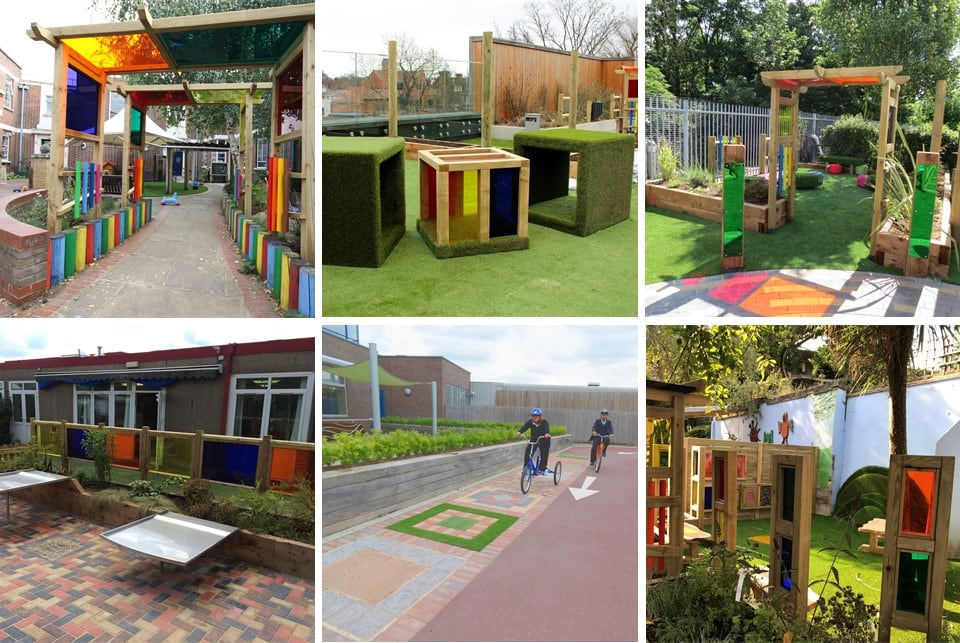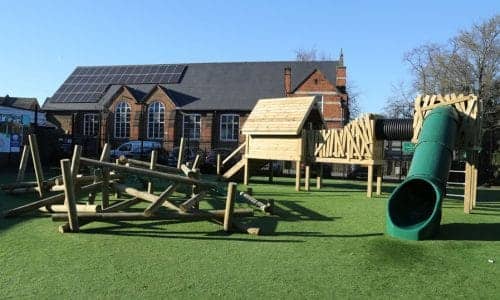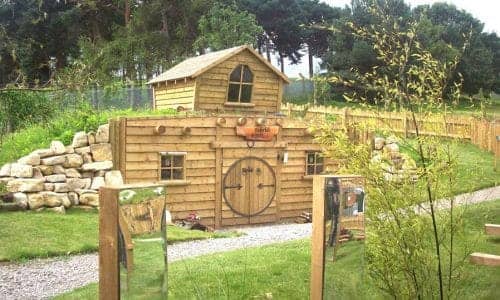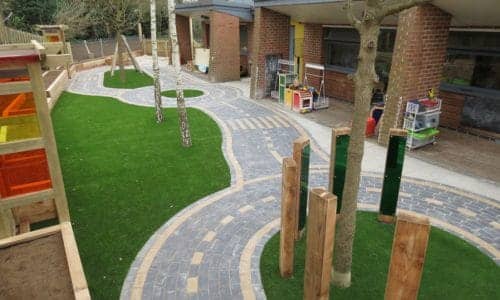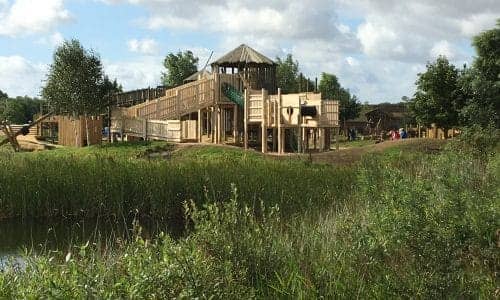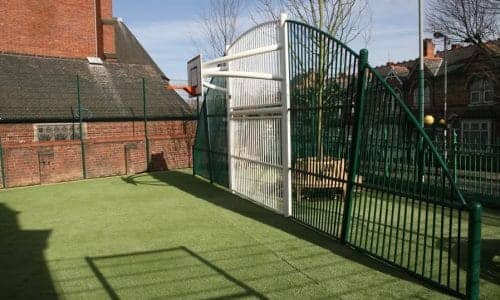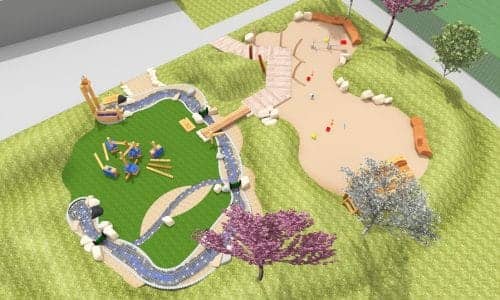A sensory garden can create an amazing inclusive space that can stimulate learning and the senses. Here is a guide on how to create your sensory garden or sensory playground.
What Is A Sensory Garden?
A Sensory Garden is an area or space which has been designed to stimulate and engages with all five senses. This happens through the use of plants, flowers, light and sound to create a completely immersive experience.
Sensory Gardens and Sensory Playgrounds in schools, SEND Settings and nurseries are beneficial to both children and adults, especially those who have sensory processing issues, including autism and other disabilities.
Benefits of a Sensory Garden
By learning outside, children learn by doing and ‘experience’. So whether your students have a special need or disability, a sensory garden can be a stimulating place to learn any subject.
For children who are hyper-reactive to sensory stimuli, then sensory gardens will offer an opportunity to explore the five senses in a safe, controlled environment, without overwhelming them. For children who are under-reactive, a sensory garden can help them experience sight, sound, touch, taste and scent in a healthy, positive way.
Sensory gardens are a brilliant all-around teaching tool since children learn best when they’re fully engaged, and a sensory garden does exactly that. Sensory gardens can teach children about the five senses and gives them the chance to explore plant life cycles, learn about the seasons, and study insects and other wildlife up close.
With the right sensory playground design and construction team, you can create an inclusive environment to be shared with all users.
Choosing The Right Space
No school or setting should be put off – whatever the size of the space – something can always be created.
The shape and the size of it are determined by what the school wants to use the space for. It also depends on what students that you have in your setting. For example, if you don’t have any children in a wheelchair, you can have tighter corners and more slopes. A great sensory garden or sensory playground team will be able to help you to create a space that encompasses all of your needs.
What To Include In Your Sensory Garden
Functionality and inclusivity is a crucial factor, along with the visual impact of the space. The Royal Horticultural Society have some great ideas about which plants work well in a sensory Garden. Here are some key considerations:
Sight
Raised planters are great for schools because it cuts down on maintenance and means you don’t have to hack out the ground, he advises. Trellis work is also good because you can grow climbers up it. It also provides privacy for the children in the garden. The biggest impact will be from the trees, which should always be evergreen so children can use the garden all year round
Touch
Every single plant has a different feeling – wide, narrow, elliptical, oval or hairy. Touch can also be covered using ground surfaces such as mosaics, pebbles, gravel, polished glass pieces and shingles. Different types of timber such as timber that is smooth, grooved – in pathways or decking. There are plenty of stone materials including bricks and paving which feel great to touch underfoot or hand. Remember to use plants that are safe for children or users to touch, and potentially eat.
Smell
Lavender and rosemary are two classic plants for this purpose and utilising highly scented or shrubs such as the Mexican orange blossom which, when you rub the leaves, gives out a fragrant, aromatic scent is great too. Timber smells great when it dries out too. Shrubs, flowers, herbs, leaves – these can all give off a fantastic scent.
Hearing
You can use water to create new sounds, plants such as bamboo for the wind to blow through or short tufty plants. In the autumn some of the plants throw out seed packets that rattle. You can also hang items from trees such as wind chimes.
Water features can also be a useful addition.
Taste
A fruit and vegetable garden are the most common ways schools stimulate this sense.
FREE Consultations
Timotay Playscapes offer a FREE consultation and design, if you would like to bring your vision to life click here to book your appointment with a Playground Consultant.





